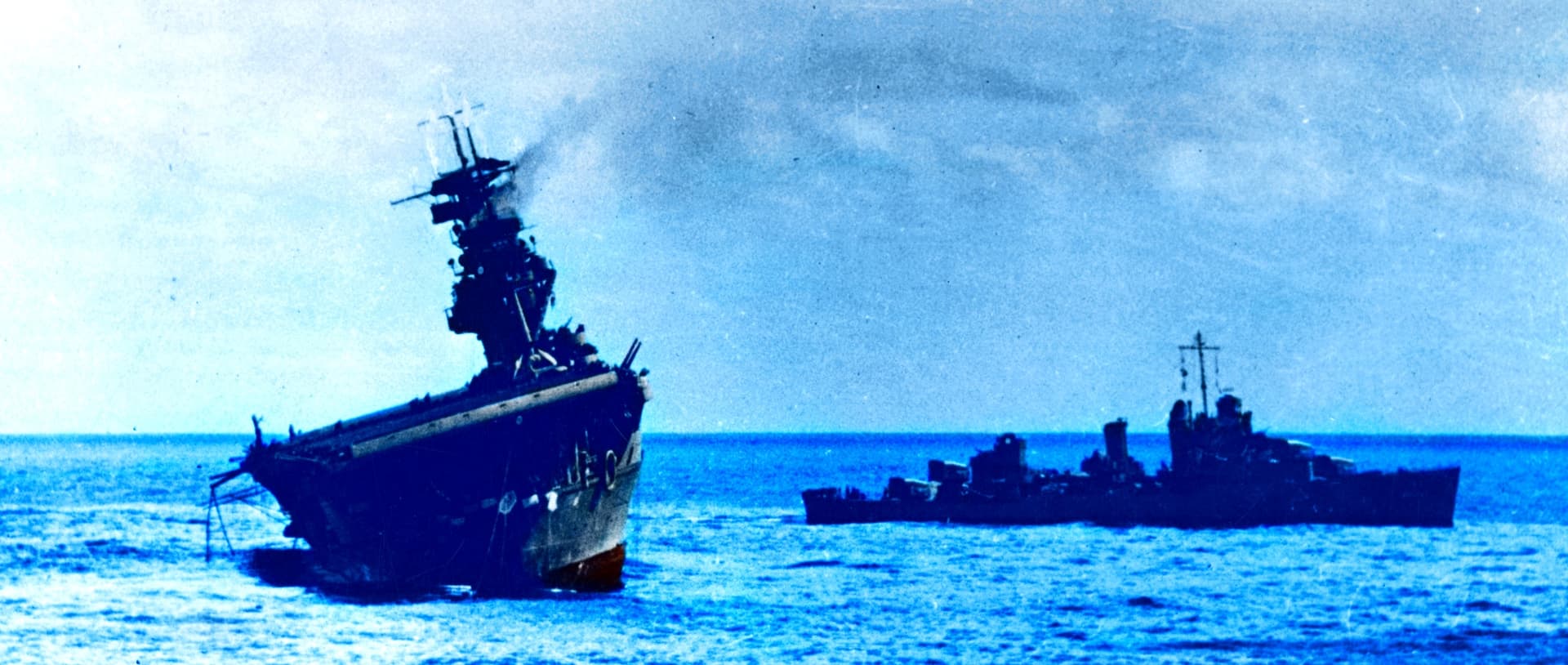Brooklyn Eagle (September 16, 1942)
USS Yorktown sunk
Carrier, 5 years old, downed at Midway

The Yorktown goes slowly to her death a day after terrific pounding by bombs and torpedoes in the Battle of Midway. The Navy said casualties were few.
Washington (UP) –
The five-year-old aircraft carrier Yorktown (19,900 tons) was sunk on June 7 as a result of damage suffered during and after the Battle of Midway, the Navy announced today.
Its fate in many respects was similar to that which befell the carrier Lexington in the Battle of the Coral Sea.
The Yorktown was put out of action by enemy bombers and torpedo planes on the afternoon of June 4. Two days later, as it was being towed to safety and prospects that it might be saved had grown brighter, a Japanese submarine fired two torpedoes into the wounded ship.
The following day, the Yorktown capsized and sank. Casualties were light, the Navy said, but did not give the figures.
The Yorktown’s losses were included in the total announced previously for the whole Battle of Midway – 92 officers and 215 enlisted men.
The only other previously announced U.S. loss in the Battle of Midway was the destroyer Hammann. This destroyer, it was revealed today, was apparently sunk by the same submarine that delivered the coup de grace to the Yorktown.
23 Jap ships blasted
The Midway battle cost the Japanese more than 23 ships sunk or damaged and 275 planes destroyed.
The Yorktown, the Navy revealed, was damaged seriously and listed heavily as a result of the June 4 attack. Because the ship was in imminent danger of capsizing the crew was ordered to abandon ship and tugs and other salvage vessels were sent to aid the carrier. A salvage party was placed aboard and the ship was taken in tow.
The communiqué said:
By the morning of June 6, the salvage party had been able to reduce the list and the prospects of saving the ship appeared brighter.
Destroyer Hammann sunk
The destroyer Hammann was sent alongside to assist. But shortly after noon on that day, the enemy’s undersea raider sent two torpedoes into the Yorktown amidships and two more into the Hammann.
The destroyer soon went down. The Yorktown’s condition became critical. In the early morning of the following day, the Yorktown capsized and sank.
The Navy explained that because it had good reason to believe the Yorktown’s loss was not known to the enemy, it had withheld the announcement “pending developments which were vital to the operations which have been in progress in the South Pacific since early August.” These operations apparently referred to the Solomons campaign.
The Yorktown was skippered by Capt. Elliott Buckmaster, a native of Brooklyn.
The Yorktown’s normal complement was listed in pre-war data as 2,072 officers and men. She had a normal aircraft complement of 85 planes.
The Hammann was commanded by Cdr. Arnold Ellsworth True of Corinth, Kentucky.
Second U.S. carrier
The Yorktown, launched at Newport News, Virginia, on April 4, 1936, and commissioned a year later, was the second American warship designed and built as an aircraft carrier. With the exception of the Ranger, a smaller ship, all earlier carriers were redesigned ships originally intended for other purposes.
The $20,000,000 spent on construction of the ship was allocated by President Roosevelt from emergency funds and the Yorktown at the time of the launching was described as the Navy’s first “NRA” vessel.
The Yorktown was a 19,000-ton ship, with a speed in excess of 35 miles per hour. Its flying deck was 109.5 feet wide and 809.5 feet long.
Mrs. Franklin D. Roosevelt christened the ship.